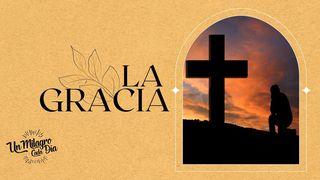Delve Into Covenant History Muestra

DAY 3 – A SERIES OF CHRONICLES PART II
On the plains of Moab, Moses, the leader of the Israelites, gives a long farewell address. This speech renews the covenant with God, and it’s cast in the form of the treaties that kings of the time would make with other kings who were subject to them. This particular literary form structures the book of Deuteronomy, and it’s an exception and interlude among the chronicles that generally make up the Covenant History.
The first half of the book of Joshua resumes the “chronicle” pattern. It’s built out of a list of kings the Israelites defeat when they invade Canaan. Joshua leads them on a campaign against the first and greatest threat they face, the “royal cities” of the region. These cities have their own kings and so are heavily fortified and defended. The narrative follows the army as it overcomes one city after another, describing at various lengths what happened at each place. At the end of the campaign, the original list itself is included in the text.
A list of twelve judges provides the skeleton for the next chronicle, which makes up the book of Judges. This book describes, at varying lengths, how God uses each of these leaders to deliver the people of Israel when they turn away from God, they’re oppressed by their enemies, and they finally turn back to God for help. The phrase “again the Israelites did evil in the eyes of the Lord” is used repeatedly to introduce the stories of individual judges.
By the end of the book of Judges, Israel is experiencing serious social disintegration. The narrator’s explanation is, “In those days Israel had no king; everyone did as they saw fit.” It’s clear that a king is needed to provide social stability and uphold justice. The short book of Ruth, which begins “in the days when the judges ruled” and ends with the name of David, elaborates on this theme. It represents the intervention of another distinct literary form, a conversational drama, before the final repetition of the literary pattern that characterizes the Covenant History as a whole.
PRAYER: Thank You, Lord, for continuing to patiently provide leadership, direction, and wisdom – even when we choose to reject it.
Escritura
Acerca de este Plan

The Old Testament is filled with unfamiliar places and names and tells a story that is impossible to understand. Actually, that’s not true. Yes, there are plenty of unfamiliar names, but the it all makes sense – once you know the context and the background. This reading plan gives you a brief overview that will help you read and appreciate God’s story
More
Planes relacionados

ABC De La Biblia Para Principiantes

La Gracia. 7 Claves Para Vivir en Plenitud.

Que El Mundo Crea

Testigos Del Milagro: La Primera Navidad

ABC De La Oración ... Para Principiantes.

¡Levántate! 7 Claves Para Levantarte Y Seguir.

1 Tesalonicenses: Modelos a imitar
Marcas De Un Discípulo
